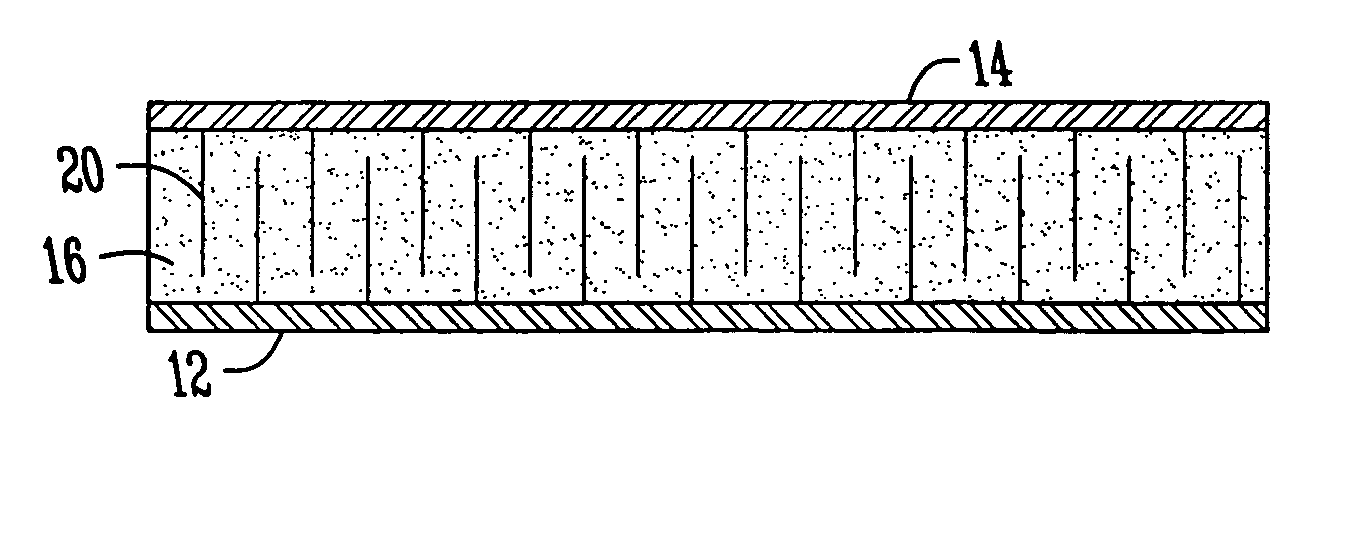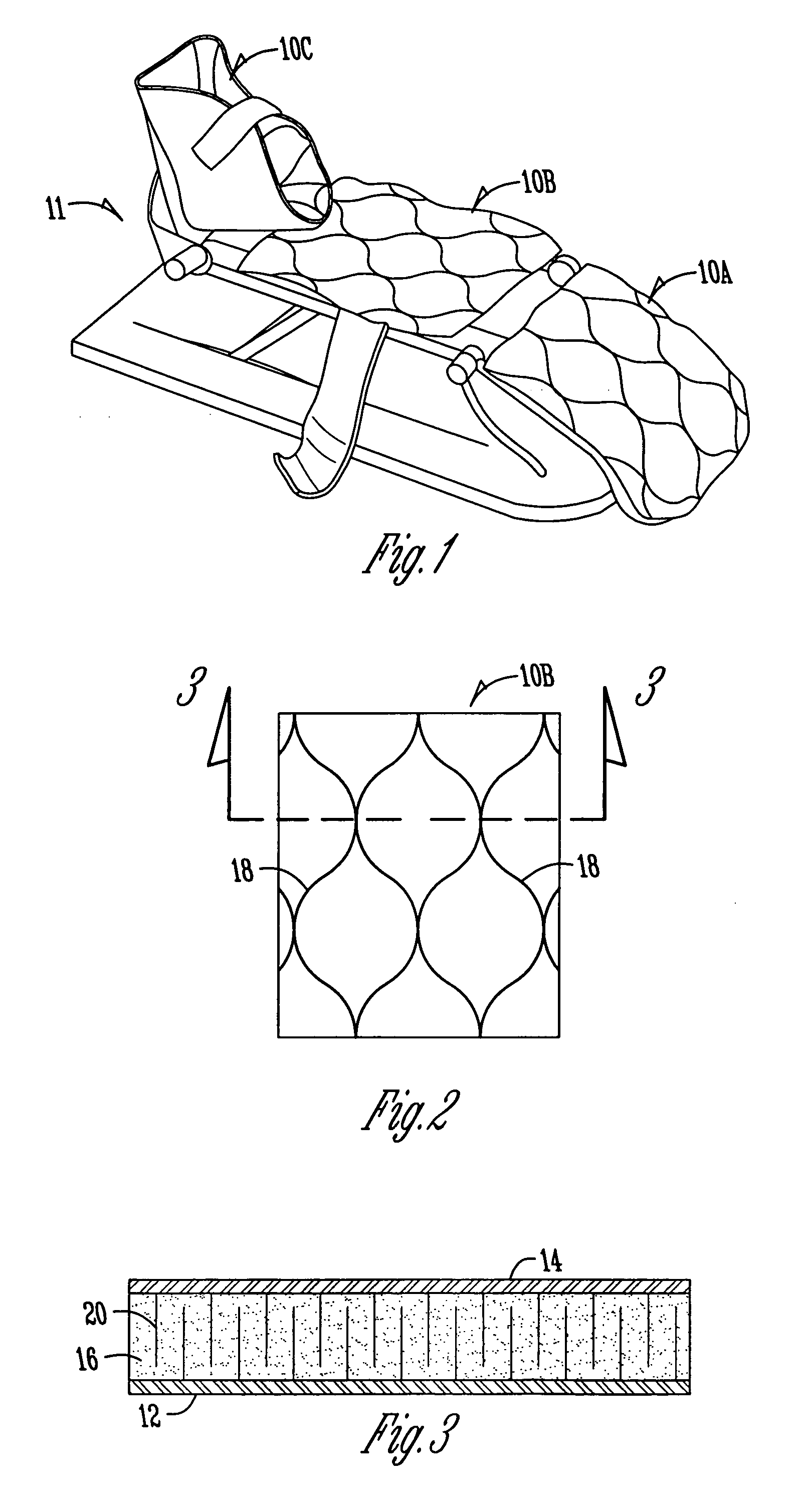CPM pad with fiber filling
a fiber filling and foam pad technology, applied in the field of cpm pads, can solve the problems of increasing patient sweating, closed cell foam has virtually no breathability, and open cell foam has limited breathability, so as to reduce patient sweating and reduce patient sweating. , the effect of aeration and breathability
- Summary
- Abstract
- Description
- Claims
- Application Information
AI Technical Summary
Benefits of technology
Problems solved by technology
Method used
Image
Examples
Embodiment Construction
[0017]FIG. 1 shows pads 10A, 10B and 10C for use on a continuous passive motion (CPM) knee machine 11 to protect a patient's leg. Other types of padded CPM machines for use with a patient's arm or hand are also known and contemplated within the scope of the present invention.
[0018]FIG. 2 shows one embodiment of the medical therapy thigh pad 10A according to the present invention which is particularly adapted for use with the (CPM) machine 11 of FIG. 1. As seen in FIG. 3, the pad 10A has an inner fabric layer 12, an outer fabric layer 14, and an internal fiber layer 16 sandwiched between the fabric layers 12, 14. Preferably, the inner fabric layer 12 is made of a wicking material so as to carry moisture away from a patient's skin. The pad 10A is quilted, with stitching 18 having any desired pattern. The quilting ties the fabric layers 12, 14 and fiber layer 16 together and prevents movement of the fiber material 16 within the fabric layers 12, 14. Other than shape, the pads 10B and ...
PUM
 Login to View More
Login to View More Abstract
Description
Claims
Application Information
 Login to View More
Login to View More - R&D
- Intellectual Property
- Life Sciences
- Materials
- Tech Scout
- Unparalleled Data Quality
- Higher Quality Content
- 60% Fewer Hallucinations
Browse by: Latest US Patents, China's latest patents, Technical Efficacy Thesaurus, Application Domain, Technology Topic, Popular Technical Reports.
© 2025 PatSnap. All rights reserved.Legal|Privacy policy|Modern Slavery Act Transparency Statement|Sitemap|About US| Contact US: help@patsnap.com


